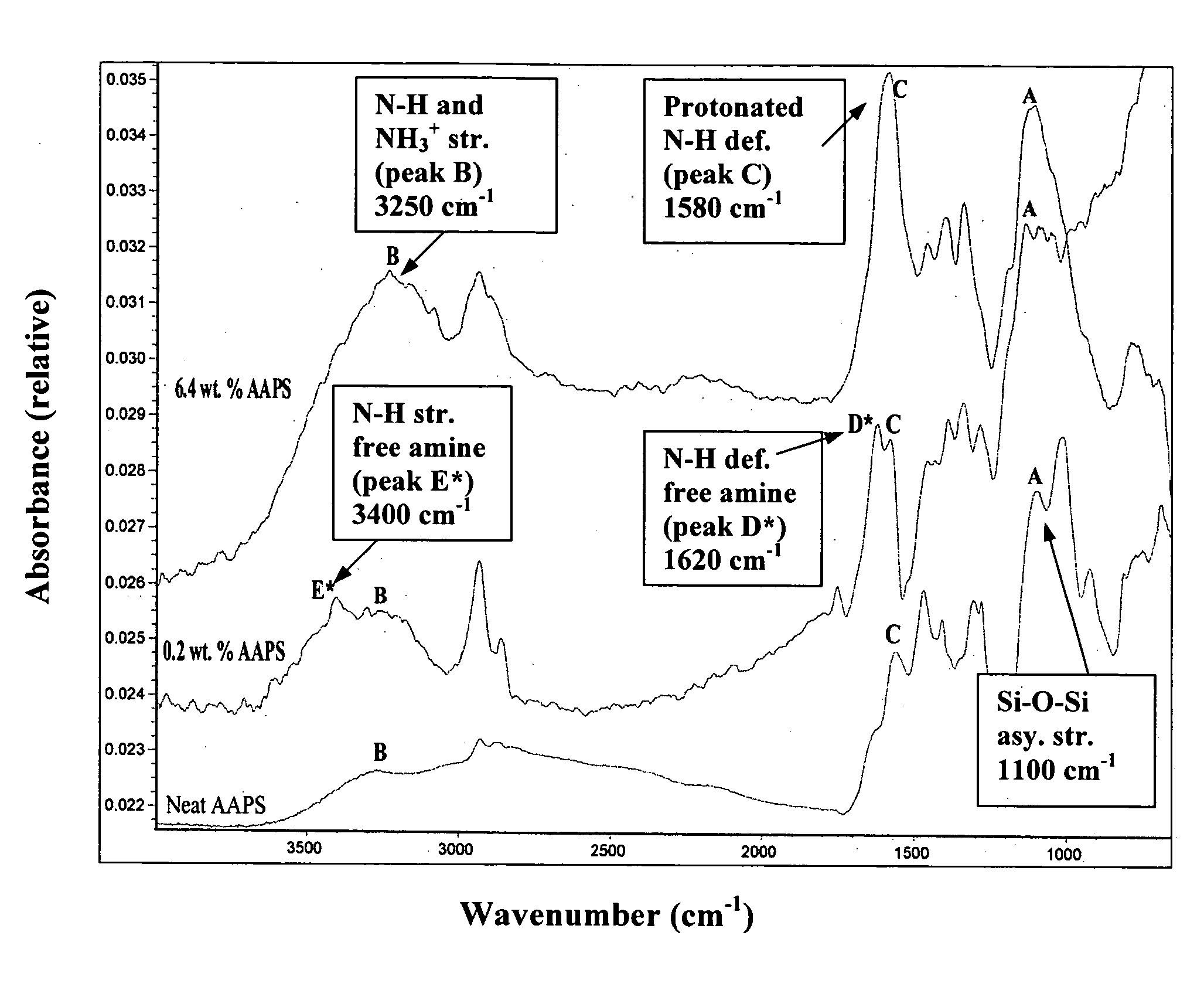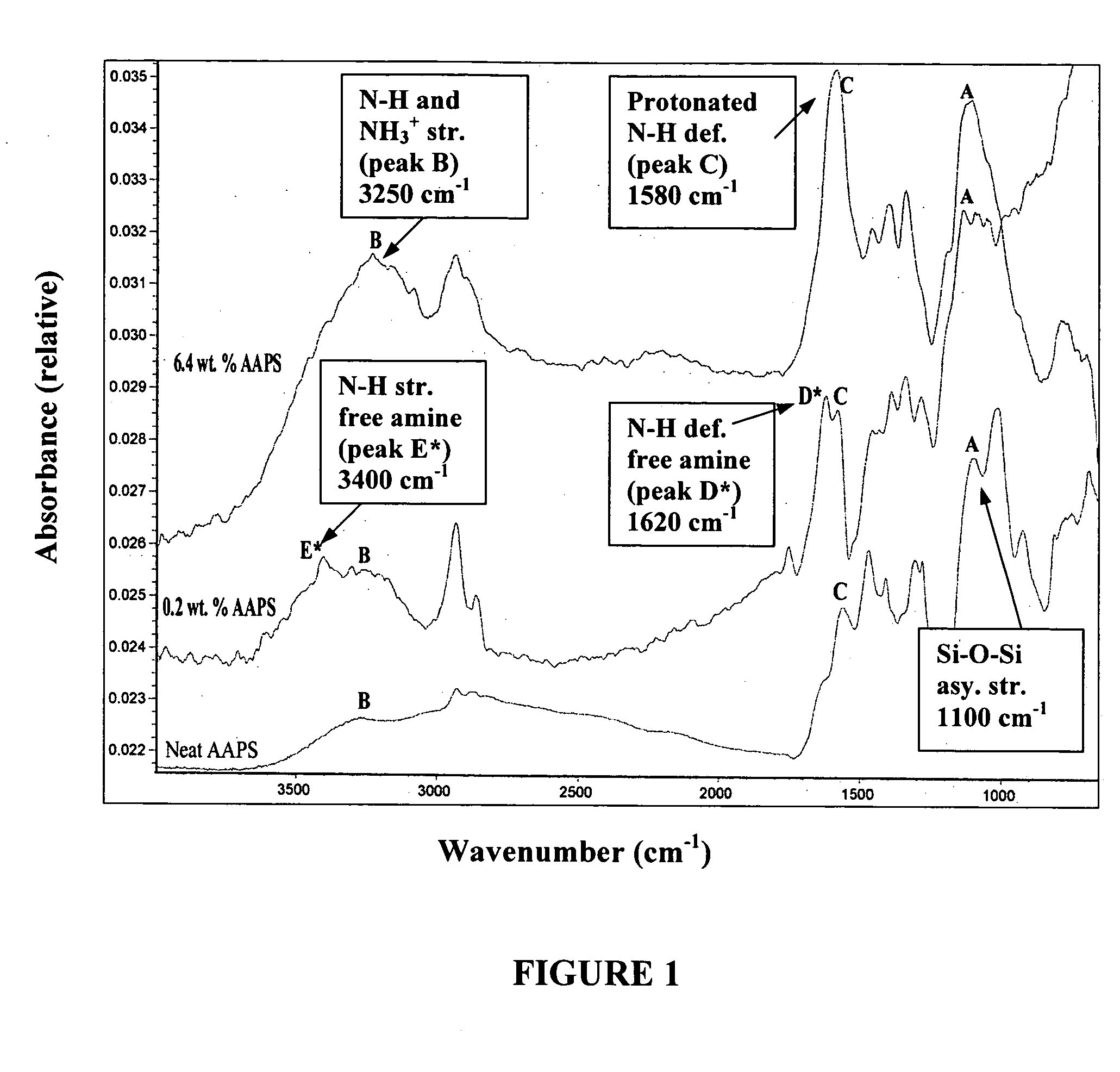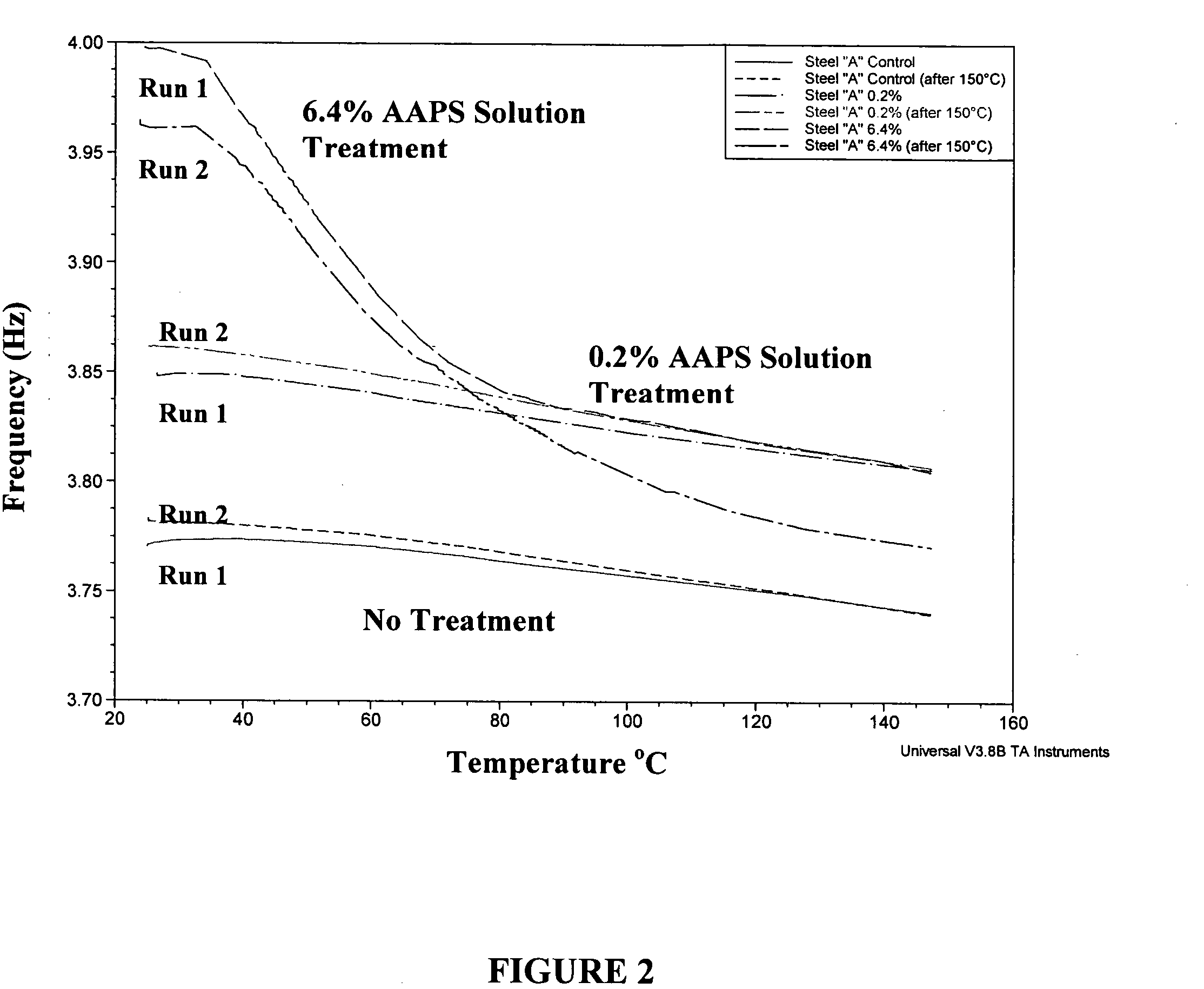Organosilane surface treated musical instrument strings and method for making the same
a technology of organosilane and surface treatment, which is applied in the direction of stringed musical instruments, instruments, musical instruments, etc., can solve the problems of reduced tonal quality, difficulty in fingering during instrument play, and high stiffness, and achieves optimum corrosion protection, favorable surface for chemisorption, and durable bond
- Summary
- Abstract
- Description
- Claims
- Application Information
AI Technical Summary
Benefits of technology
Problems solved by technology
Method used
Image
Examples
example 2
[0083] Using the test methods of EXAMPLE 1, this example demonstrates the relative corrosion resistance of musical instrument strings that have been surface treated with the preferred primary surface treatment of the present invention.
[0084] In this series of surface treatment experiments, phosphor bronze wound strings were treated to determine the effect of an organosilane surface treatment on the corrosion resistance of both steel-core and Ti alloy-core strings. The strings for this comparison included a DR-Rare-Bronze™ light-tension “A” string (C521 phosphor bronze wound steel core); and a Rohrbacher Technologies Low-tension “A” string (C521 phosphor bronze wound Ti alloy core). The composition of C521 phosphor bronze is given by ASTM B159 as Pb (0.05% max), Fe (0.10% max), Sn (7.0-9.0%), Zn (0.20% max), P (0.03-0.35%), and Cu (remainder). Both types of strings were cut into 3.17 cm strips as described in EXAMPLE 1, and were then surface treated by dipping into solutions of pre-...
example 3
[0091] A method was developed to estimate the level of organosilane deposition, so that the mass of the surface treatment could be expressed as an estimated percentage of the total mass for any treated string. The organosilane treatment solution for this example was comprised of 5.143% active ingredients, including 4.290% by weight of prehydrolyzed Z6020, and 0.853% by weight of a perfluoroether functionalized trialkoxysilane, commercially known as Fluorolink™ S-10 from Solvay. The solution was prepared by first prehydrolyzing the Z6020 using the methods of EXAMPLE 2. After 24 hours, the prehydrolyzed Z6020 was added to 70 / 30 (v / v) IPA and water. Next, the S-10 was added to yield the final organosilane solution. This solution was then aged for a period of 24 hours under ambient conditions prior to use.
[0092] The treatment solution was applied to three separate 6 in. segments cut from a 0.046″ nickel plated steel wound steel-core string (removed from a set of Tite-Fit™ electric guit...
example 4
[0094] This example demonstrates the relative degree of corrosion protection that is imparted by a monolithic organosilane surface treatment of the type used in EXAMPLE 3. The organosilane treatment solution for this example was comprised of −1.1% active ingredients, including 1.0% by weight of prehydrolyzed Z6020, and 0.1% by weight of Fluorolink™ S-10. The solution was prepared by first prehydrolyzing the Z6020 using the methods of EXAMPLE 2. After 24 hours, the prehydrolyzed Z6020 was diluted in distilled water, and then the S-10 was added to yield the final aqueous organosilane solution. The solution was then aged under ambient conditions for a period of 24 hours prior to use.
[0095] A 0.042″ diameter phosphor bronze wound steel-core “A” string was removed from a set of DR-Rare-Bronze™ light-tension strings, and was surface treated with the 1.1% organosilane solution (using the procedures of EXAMPLE 2). The relative corrosion resistance of the treated string was then compared to...
PUM
| Property | Measurement | Unit |
|---|---|---|
| temperatures | aaaaa | aaaaa |
| temperatures | aaaaa | aaaaa |
| temperature | aaaaa | aaaaa |
Abstract
Description
Claims
Application Information
 Login to View More
Login to View More - R&D
- Intellectual Property
- Life Sciences
- Materials
- Tech Scout
- Unparalleled Data Quality
- Higher Quality Content
- 60% Fewer Hallucinations
Browse by: Latest US Patents, China's latest patents, Technical Efficacy Thesaurus, Application Domain, Technology Topic, Popular Technical Reports.
© 2025 PatSnap. All rights reserved.Legal|Privacy policy|Modern Slavery Act Transparency Statement|Sitemap|About US| Contact US: help@patsnap.com



